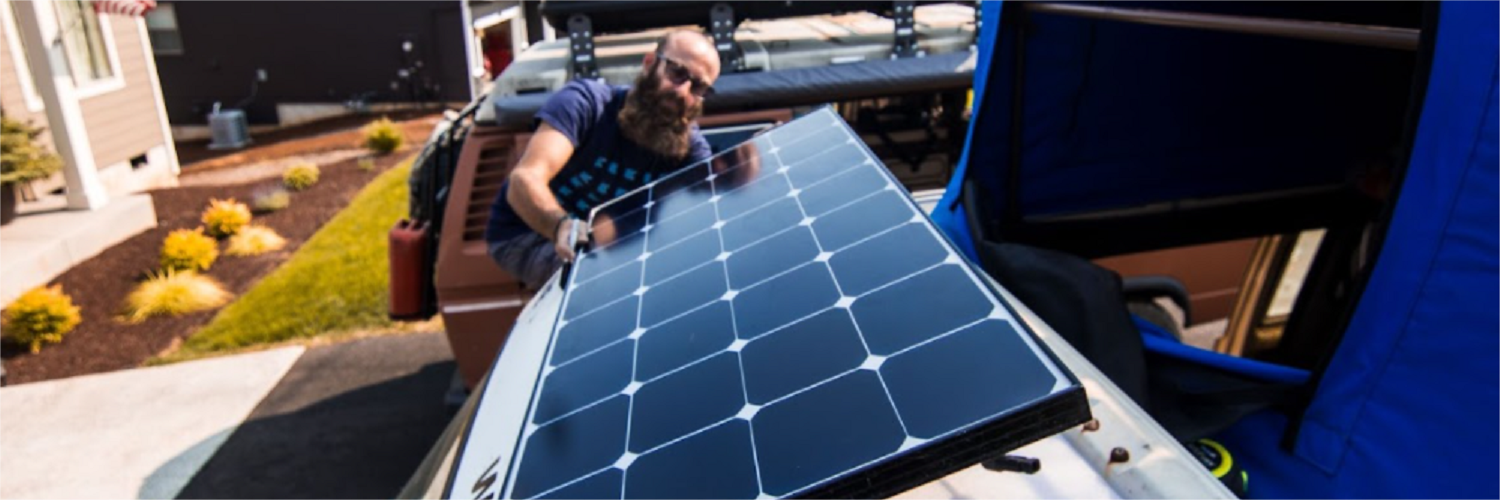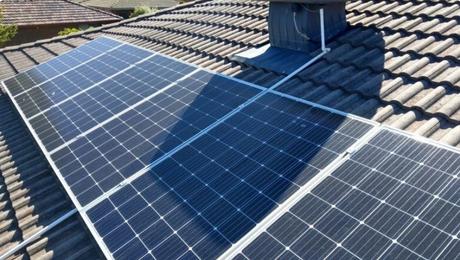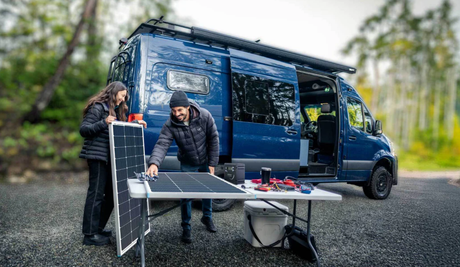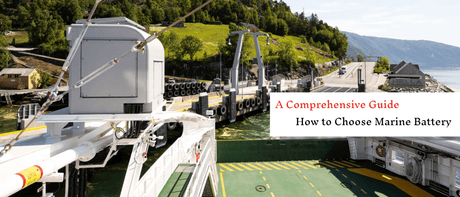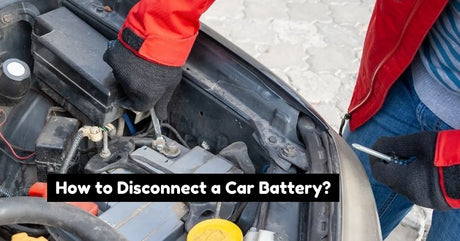As solar technology continues to improve and prices continue to drop, more and more homeowners are considering an investment in solar panels. Making the switch to solar can save you thousands on monthly utility costs, improve your quality of life, and give you the peace of mind from having reliable access to sustainable energy whenever you need it. What should you know about solar panels when you’re comparison shopping? What kind of maintenance do they need, and are they even worth it?
How do solar panels work?
It’s helpful to understand the basics of how solar panels work before diving into the world of solar panels. Solar panels are made up of many solar cells made of silicon. They have both a positive and negative layer. This creates an electric field. When sunlight hits a solar panel, it creates an electric current.
In order to complete your system, you’ll need to connect panels to a charge controller, battery, and inverter. Charge controllers limit and monitor how much current goes through a battery. Batteries then store and produce DC power. In order to use household AC appliances, such as blenders, laptops, and phone chargers, an inverter is installed to change that power from DC into usable AC power.
A significant reason solar panels that end up being cost-effective is because of their longevity. Many solar manufacturers include a 25-year warranty on their products. That means you can expect the solar panels to stay at high efficiency -- 80% or above -- for at least 25 years, even with exposure to the harsh Canadian winters.
Even after the 25-year mark, most solar panel systems will continue to function dependably. According to a National Renewable Energy Laboratory study, more than three-quarters of solar panels continued to perform well past their warranty.
It’s important to remember that this information is about the solar panels themselves. The inverter that’s necessary to convert the electricity from DC to AC usually comes with a 10- or 20-year warranty, so it will likely need to be replaced before the panels.
Also, the storage batteries will need replacement. Lithium-ion batteries usually have either a 10- or 15-year warranty, while standard lead-acid batteries will only survive around three to seven years, depending on how well they are maintained.
Are solar panels worth the investment?
There are a variety of benefits to solar panels. They are sustainable, cost-effective, quiet, reliable, and require very little maintenance.
Solar can save you money.
By utilizing power generated from the sun, you can save thousands on monthly utility costs, whether you’re in a home or cabin. If you’re living life on the open road and are installing solar panels on a RV, camper, or motorhome, you’ll be saving money on campground and hookup fees.
Solar is virtually maintenance-free.
Solar panels require minimal cleaning and maintenance. You’ll want to keep them clear of any debris, leaves, or snow. We also recommend washing them at least once a year.
Solar provides more flexibility and freedom to those living in an RV.
By installing solar panels on the roof of your van, motorhome, or RV, you can recharge your house batteries and run AC appliances without needing to hook up to an external power source. You’ll no longer have to rely on a dirty, noisy generator to meet your energy needs.
Solar panel kits make installing solar headache-free.
Thanks to Renogy solar panel kits, which include your essential components, going solar has never been easier. They also take the headache out of trying to figure out if your components are compatible.
What should I know about the different types of solar panels?
Monocrystalline vs. Polycrystalline Panels
Deciding between monocrystalline and polycrystalline panels is one of the first decisions you should make when shopping for solar panels.Polycrystalline panels are light blue in color, and they are less energy and space efficient than monocrystalline panels. On the plus side, they are also cheaper. Monocrystalline panels, which are darker in color, are more space and energy efficient. Keep in mind that with that added efficiency comes a higher price tag.
Portable vs. Roof Mounted Panels
When many people think of solar panels, they typically think of roof mounted, rigid solar panels. Roof mounted solar panels are ideal if you have consistent energy needs and want to be able to charge your battery bank at the flip of a switch. Rigid panels are the most common and also the most durable. Flexible solar panels are a great option if you’re mounting your solar panels on a non-flat roof.
On the other hand, portable solar panels are perfect for those who may not be ready to mount solar panels on their roof, have limited surface area to mount panels, want to generate solar on multiple applications, such as on your RV and your home, or have smaller energy needs. One of the most popular types of portable solar panel systems are folding suitcase panel kits. Folding suitcase panel kits are lightweight, easy to handle, and can be set up on the ground and angled for maximum efficiency.
12V vs. 24V Panels
Most solar panels are available as 12 or 24 volts. Most RV’s and boats have 12V battery banks, so people usually stick with the 12V panels in order to be compatible with those. You may consider a 24v solar panel system if you have high energy needs. If your energy needs are about 1 to 3 kW, we’d recommend a 24 volt system. Having a higher voltage panel system can save you money in the long run as you need less charge controllers and can use thinner cables for the same amount of power.
Should I purchase a solar kit?
As mentioned earlier, Renogy offers a variety of solar panel kits that make shopping for solar components much easier. Renogy solar panel kits include solar panels, a charge controller, cables, and mounting hardware. You’ll need to purchase a battery bank and inverter to complete your installation.
Do solar panels require maintenance?
One of the great things about solar panels is how little maintenance they require. You’ll want to hose off the panels at least once a year to remove any dirt or other residue that may have collected on the panels. It’s also a good idea to visually examine the panels at that time to make sure all connections are in place and in working condition. If you’re in an area with snow, you’ll want to make sure snow doesn’t collect on the surface of the panels. Panels typically generate enough heat to melt off snow that lands on the surface, ensuring you’ll be able to stay cozy and warm, even in the middle of winter.
How do I size my system?
It’s incredibly important to properly size your solar installation. If you undersize your system, you won’t be able to meet your energy needs with your solar panels. If you oversize your system, you’ll have wasted thousands of dollars on technology you don’t even need. To determine what size solar system is best for you, we recommend using the Renogy solar panel calculator. The solar sizing calculator allows you to input information about your lifestyle and appliances used to help you decide on your solar panel requirements. The solar panel calculator then gives you the minimum and recommended system size, as well as the recommended battery output.
How is Solar Panel Efficiency Measured?
A solar energy system has an efficiency rating that can be somewhat confusing. When solar panels are converting sunlight into usable energy, we measure the efficiency rating by how much of the sun’s potential energy gets converted.
In other words, a solar panel system with a 20% efficiency rating doesn’t mean it’s only producing energy at 20% capacity. It means the solar panel can convert 20% of the energy provided by the sun’s rays hitting the panel. A 100-watt panel with a 20% efficiency rating absorbs 100 watts out of a possible 500 watts of the sun’s energy.
In most cases, even the best home solar panel kits cannot go much beyond a 20% efficiency rating. Instead, it is the size of the solar panel that can allow it to convert more sunlight.
What Are the Components of a Solar System?
Solar power systems consist of more than just solar panels, but let’s start with those. No matter the type of solar panel, they all function in the same basic way -- a thin film of crystalline silicon is placed between positively and negatively charged layers to create an electric field. It’s this electric field that produces the current necessary to create and then convert energy.
There are two types of solar panels: Monocrystalline and polycrystalline. Monocrystalline solar panels are more expensive, but they usually have a higher efficiency rating, sometimes slightly above 20%.
Polycrystalline solar panels’ efficiency rating may not be as high, but they are comparable. One of the most noticeable differences between the two is their appearance -- monocrystalline solar panels are black, while polycrystalline solar panels are a lighter blue colour.
Regardless of the type of panel, solar panel kits usually come with four main components:
- Solar Panels: Used to collect the sun’s energy
- Charge Controllers: Control the energy between solar panels and batteries
- Inverters: Used to change absorbed energy from direct current (DC) to alternating current (AC)
- Batteries: Allow energy to be stored for later
To determine which solar power system size would work best for your property, you can use our solar panel calculator.
Does My Solar Energy System Need Batteries?
Any solar panel system that needs to produce electricity continuously should include batteries. Otherwise, if there are too many rainy days in a row (something the folks over in Victoria, BC, know all about!), the system will quickly run out of energy and not be effective.
If a property is hooked up to the main electrical grid and can continue to utilize it for energy, having batteries to store extra power isn’t as necessary. However, if you plan to use your solar panels off-grid, even if only for a short time, it’s best to have batteries.
Another factor to consider when it comes to batteries is savings. Yes, you can save more than a loonie or a toonie on your electricity bill each month, even without batteries.
But there is also the potential for businesses to store extra converted energy in batteries and sell it back to the grid with solar rebates or net metering, depending on where the business is located. Every province except Manitoba offers net-metering, and most of the provinces offer rebates or return rates between $0.03/kWh and $0.30/kWh.
How Much Does It Cost to Hire a Solar Installer?
When it comes to installing solar panels, there are various factors involved in the cost of labour. One of the most prominent factors is how many solar installers are competing for business in your area. The more competition there is, the lower the price will be for consumers. However, if there is only one solar installer within a few hundred kilometres of your property, they’ll likely be charging more.
On average, you can expect solar installers to charge anywhere between $1 Canadian and $1.50 Canadian per solar watt being installed. Remember, this is strictly a labour fee and does not include the hardware itself.
Can I Install a Solar System Myself?
Yes, there is the option to install your solar energy system yourself. In general, it’s not the electrical components that are challenging, as they are plug-and-play; it’s the actual mounting of the solar panels that’s difficult, particularly if they are roof-mounted. But for more basic jobs, such as tiny home solar installations or ground-mounted solar panels, this isn’t as much of a factor.
A common DIY trick is to set up the panels and electrical parts on your own, but to hire a certified electrician to connect the system to the service panel so there won’t be any potential hazards or issues.
How Does Solar Impact the Value of My Home?
Solar technologies have been on the market for many decades, and their prices continue to drop dramatically as renewable energy sources become more popular and more necessary. Even the installation of small solar panel kits can make a huge difference in your home’s value.
A 2017 study by the Lawrence Berkeley National Laboratory concluded that installing solar panels on your home can increase its value by almost 4%. On average, that equates to nearly $19,000 Canadian.
Conclusion
Whether you’re living an off-grid lifestyle in the woods or the mobile life on the wide open road in your RV or van, there’s a solar panel for you. From folding suitcase portable solar panels to highly efficient monocrystalline solar panels to mount on your roof, Renogy offers a range of solar panels designed specifically to meet your needs.

